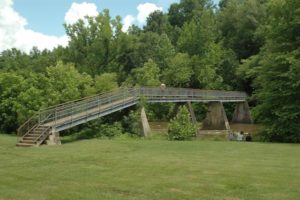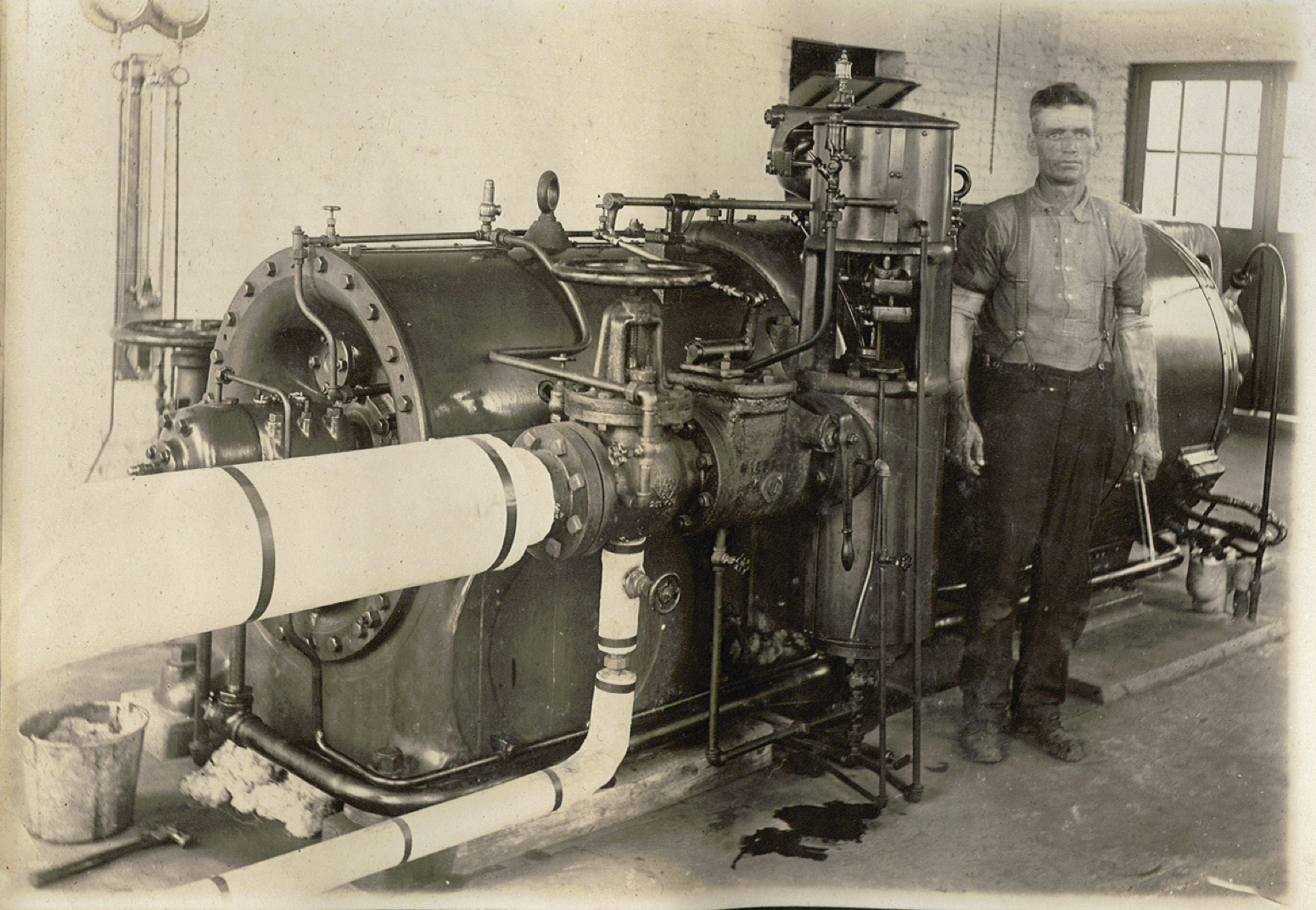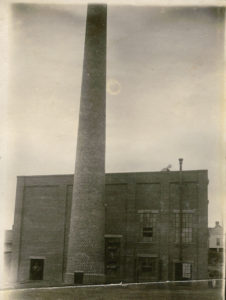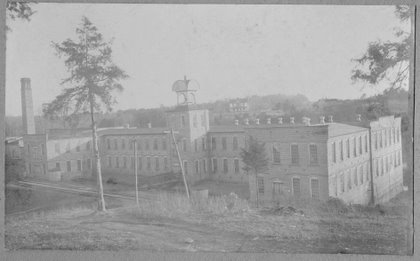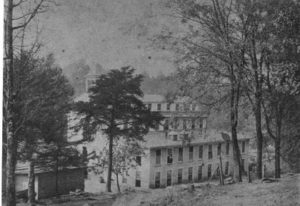Location: Franklinville, south side Deep River, looking east from the SR 2235 bridge. The concrete storage silos of the former roller mill are to the left.
Today, Faith Rock is a favorite spot for visitors and town’s people alike. It offers several levels of walking/hiking trails, which can be as easy or as challenging as you wish. Visitors can access the trails from the footbridge at the west end of Riverside Park. While walking or hiking, enjoy the wonder of nature that will surround you. A picnic area, located near the river, is perfect for a relaxing lunch with family and friends. Our regions’ distinctive four seasons, provides stunning, scenic views, from various elevations, and allows you to see up and down Deep River. From the top of Faith Rock, visitors can see for miles around. The beauty of the area gives amateur and professional photographers the opportunity to capture some amazing photos, so bring your camera along. Faith Rock is open from dawn to dusk every day of the year. The Town of Franklinville is fortunate to have this beautiful and historic spot in our community and we would love to share it with you.
Rising out of Deep River several hundred feet upstream of the site of Elisha Coffin’s grist mill and textile factory is Franklinville’s major geological landmark, a huge bluestone outcrop known as Faith Rock. It was the setting for one of Randolph County’s most legendary Revolutionary War incidents.
While taking a wagon of produce to trade for salt at the Pedee River market on May 2, 1782, local resident Andrew Hunter was captured by the notorious Tory guerrilla leader David Fanning. Facing immediate execution, Hunter made a desperate escape. In Fanning’s words, Hunter “sprung upon my riding mare, and went off with my saddle, holsters, pistols, and all my papers… We fired two guns at him; he received two balls through his body, but it did not prevent him from sitting the saddle and make his escape.” [David Fanning, The Narrative of Colonel David Fanning (Spartanburg: The Reprint Company, 1973; pp. 59-62.]
Enraged, Fanning plundered Hunter’s home, holding his pregnant wife hostage for the return of the horse, “a mare I set great store by, and gave One Hundred and Ten guineas for her.” [ibid.] However, Fanning’s guerrilla band was forced to release Mrs. Hunter and ride out to join the British evacuation of Charleston, South Carolina.
But Fanning risked a final return to Randolph on September 5, 1782, solely in an attempt to recover his mare. The incident at Faith Rock must have occurred at this time. Hunter “was riding the Bay Doe, on the high ground south of Deep River, and not far above the …ford; but found they were heading him in that direction. He then turned his course up the river, but they were there ready to receive him. The only alternative was to surrender, which would be certain and instant death, or to make a desperate plunge down a precipice, some fifty feet high into the river. He chose the latter… It was such a daring adventure that his pursuers… stopped short, in a kind of amazement, and contented themselves with firing two or three pistols after him. As there was no level ground at the bottom of the descent, he plunged right into the river… sometimes swimming and sometimes floundering over rocks, until he found a place where he got out on the north side and made his escape.” [E.W. Caruthers, Revolutionary Incidents and Sketches of Character Chiefly in the “Old North State.” Philadelphia: Hayes and Zell, 1856; pp. 280-281.]
Fanning left the country in frustration on September 22, neither recovering his horse nor gaining revenge.
Local wisdom in Franklinville has always repeated the claim that Bay Doe’s hoof prints can still be seen, embedded in Faith Rock. The truth of that, as well as the likelihood that any horse and rider could jump off a 60-degree slope into a river normally as shallow as Deep River, must be left to the opinion of visitors.
Several generations of Eagle Scouts have established and maintained a rough trail from the Andrew Hunter footbridge in Franklinville, up to the top of the rock. In this 21st-century, there are said to be “geo-caches” stashed around Faith Rock which game-players may discover with their GPS locators.
